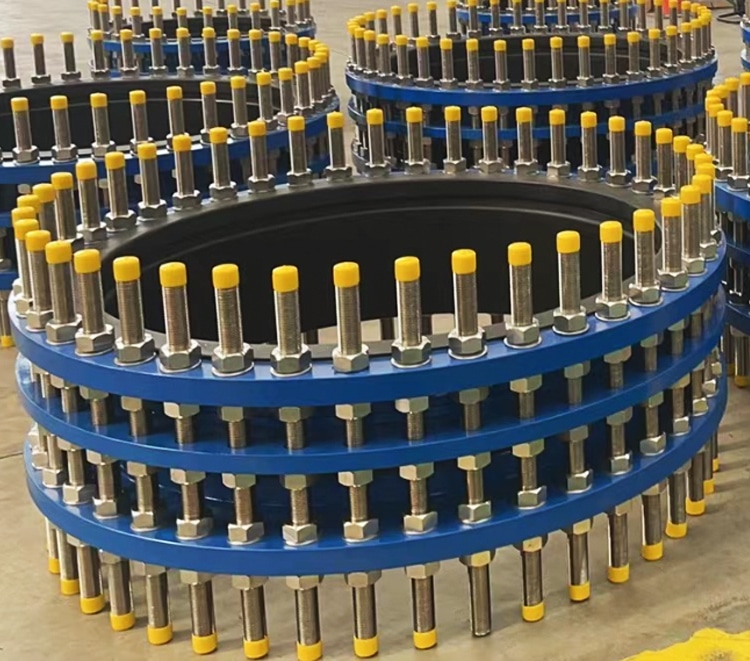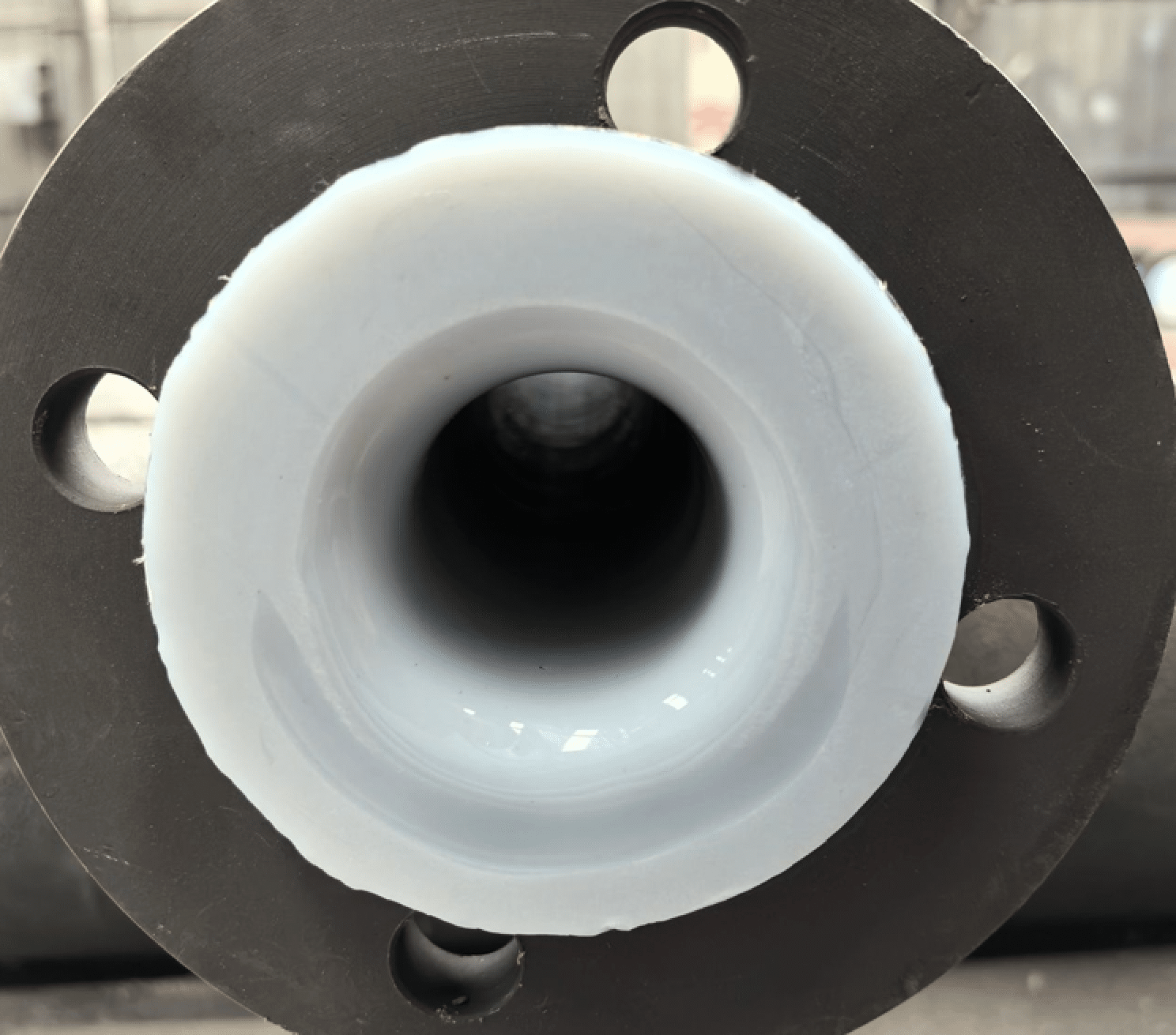In actual pipeline projects, many media—such as seawater, acidic and alkaline liquids, food fluids, and pharmaceutical solutions—have strong corrosiveness or strict hygiene requirements. If the internal surface of the pipe fittings is not properly treated, it can lead to corrosion, media contamination, or even equipment failure.
Therefore, selecting the appropriate internal lining material according to the transported medium is crucial. Judberd, as a professional manufacturer of pipe fittings ,pipe couplings ,flange adaptors and dismantling joint, summarizes below the applicable scenarios, advantages, and limitations of commonly used internal lining materials to help you make an informed selection.
1, Ebonite Hard Rubber
Recommended Media:
Non-oxidizing acids: hydrochloric acid (all concentrations), phosphoric acid, dilute sulfuric acid, acetic acid
Alkalis: sodium hydroxide, potassium hydroxide
Salt solutions: electrolytes, seawater
Non-polar organic solvents: alcohols, ketones, esters, etc.
Features:High sulfur content (25%–50%), high crosslink density and dense structure.Excellent physical strength and chemical resistance.Very low permeability, effectively blocks corrosive media.
Limitations:
Poor resistance to strong oxidizing acids: such as concentrated sulfuric acid, nitric acid, chromic acid.
Poor resistance to aromatic and chlorinated hydrocarbon solvents: benzene, toluene, dichloromethane, etc.
Poor oil resistance: unsuitable for mineral oils or animal/vegetable fats
Long-term usage temperature ≤ 85°C
Poor weather resistance: aging, cracking, and brittleness when exposed to sunlight and air
Typical Applications:Pipefittings ,pipe couplings, flange adaptors and dismantling joint for chemical liquids such as hydrochloric acid, phosphoric acid, alkalis—widely used in chemical processing and acid pickling systems.
2, EPDM Rubber Lining
Recommended Media:Hot water, steam, Drinking water, food liquids, Weak acids, weak alkalis, alcohols, detergents, General neutral or oxidizing media
Features:Excellent aging and ozone resistance,Food-grade versions available for pharmaceutical and food industries,Broad chemical compatibility, especially with polar substances
Limitations:
Not resistant to oils and fats (mineral oil, gasoline, etc.)
Limited long-term resistance to strong acids and alkalis
Typical maximum operating temperature: 120°C
Typical Applications:Clean fluid pipelines in food and pharmaceutical plants, such as those transporting syrup, purified water, or beverages.
3, PE (Polyethylene) Lining
Recommended Media:
Cold water, domestic water, buried supply lines
General organic compounds, weak acids and alkalis, low-concentration salt solutions
Seawater, agricultural irrigation water
Features:Low cost, easy to mold, convenient construction;Suitable for large-scale, long-distance corrosion protection;
Limitations:
Poor high-temperature resistance: long-term use not recommended above 60–70°C
Limited resistance to strong oxidants and strong acids/bases
Not suitable for high cleanliness applications (non-food-grade)
Typical Applications:Municipal water pipelines, agricultural irrigation, buried corrosion-resistant water systems.
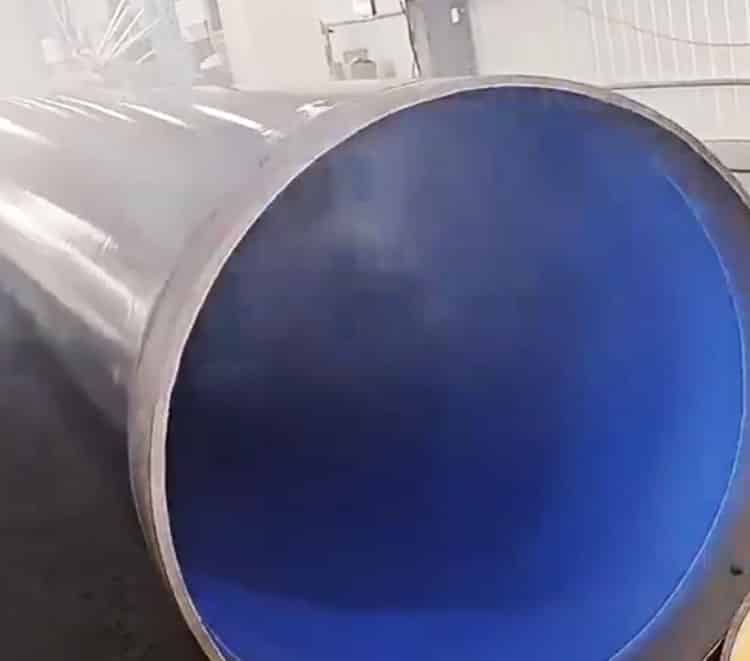
4, PTFE (Polytetrafluoroethylene / Teflon Lining)
Recommended Media:
All strong acids and alkalis (e.g., concentrated sulfuric acid, hydrofluoric acid, concentrated NaOH)
All types of organic solvents
Pharmaceuticals, semiconductors, food-grade media
Features:Inert to almost all chemicals, known as the “king of plastics”;
Extremely low friction coefficient, non-stick, high temperature resistance (above 200°C);Available in food-grade or ultra-clean versions for high-end industries
Limitations:Relatively high cost, complex manufacturing process;Difficult to apply full lining in structurally complex fittings;Significant thermal expansion, requiring compensation design
Typical Applications:High-corrosion chemical media, high-purity pharmaceutical fluids, ultra-clean pipelines in the semiconductor industry.
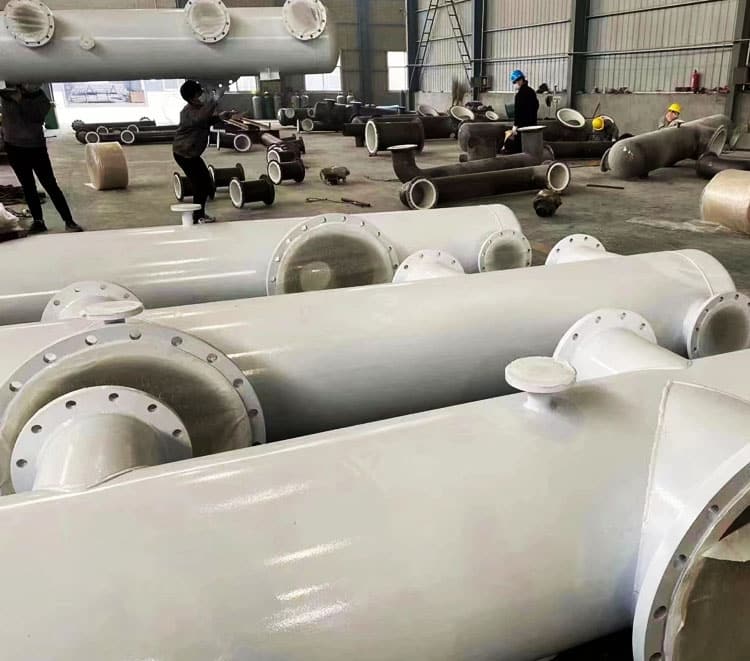
5, ETFE Lining
Recommended For:Highly concentrated strong acids (e.g., nitric acid, sulfuric acid), strong oxidants (e.g., potassium permanganate), chlorine, hydrofluoric acid, organic solvents, and other aggressive chemicals.
Feature:Excellent chemical resistance, nearly universal corrosion protection;High temperature resistance, up to ~150°C;Higher mechanical strength and better impact resistance than PTFE;Smooth surface, anti-scaling, and easy to clean.
Limitations:Higher cost, not ideal for general-purpose applications.
Tends to age under continuous use at temperatures above 160°C.
Not abrasion-resistant, unsuitable for highly erosive or slurry media.
6,Ceramic-Lined
Recommended For:Solid-liquid slurries under highly abrasive conditions, such as ore slurry, coal powder, cement, slag, and high-speed particulate-laden fluids.
Feature:Exceptional wear resistance, service life 5–10 times longer than ordinary pipes.
Withstands high temperature, high flow velocity, and strong impact.Good chemical stability, resistant to acids and alkalis.Ideal for heavy-duty industries such as metallurgy, power generation, mining, and chemical processing.
Limitations:Brittle nature—prone to damage under strong vibration or improper installation;Not suitable for highly corrosive gases or liquids;Heavier structure, harder to install, higher transportation cost.
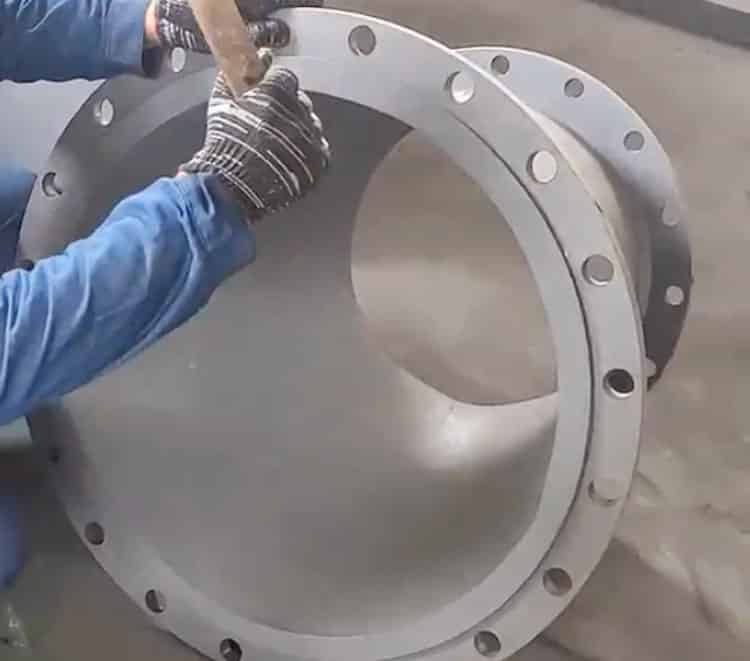
How to Select the Right Lining?
| Media Type | Recommended Lining | Reason |
|---|---|---|
| Hydrochloric acid, phosphoric acid, dilute sulfuric acid | Ebonite | Excellent acid resistance, low permeability, cost-effective |
| Strong oxidizing acids like concentrated sulfuric or nitric acid | PTFE | Chemically inert, resistant to oxidation |
| Seawater | Ebonite / PE / EPDM | Depends on temperature and whether it must meet potable water standards |
| Food liquids | pharmaceuticals EPDM (food-grade) / PTFE (clean-grade) | Non-contaminating, hygiene-compliant |
| Organic solvents | Ebonite / PTFE | PTFE is universal, Ebonite fits certain alcohols and ketones |
| Strong alkalis | Ebonite / PTFE | Both have good alkali resistance |
| Oil | media Not recommended for rubber-based linings | use metallic or PTFE lining |
Conclusion
Choosing the appropriate lining material affects not only the durability of the pipe fitting but also the purity, safety, and stability of the transported medium. Judberd specializes in producing various fittings pipe couplings, flange adaptors and dismantling joint and can provide customized internal lining solutions based on your medium type, temperature requirement, and industry standard.
If you’re unsure which lining to select, feel free to contact Judberd’s technical team. We will provide you with one-on-one expert guidance and tailored solutions.



